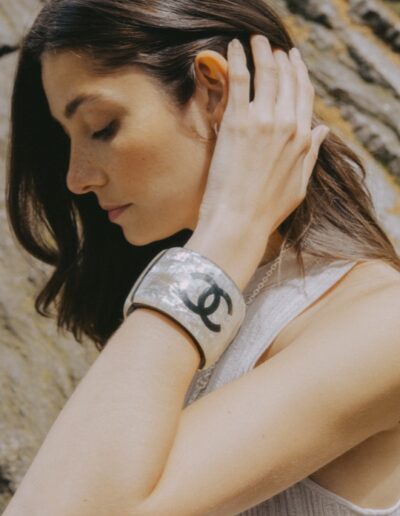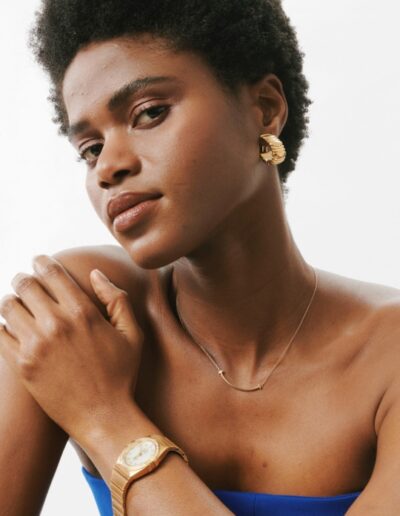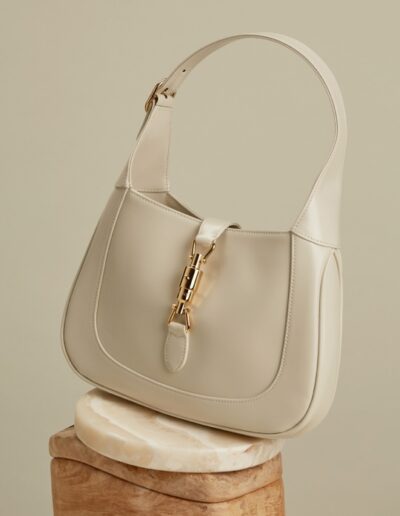DESIGNER 101
Vacheron Constantin
101
By The Rebag Watch Team, May 26, 2021
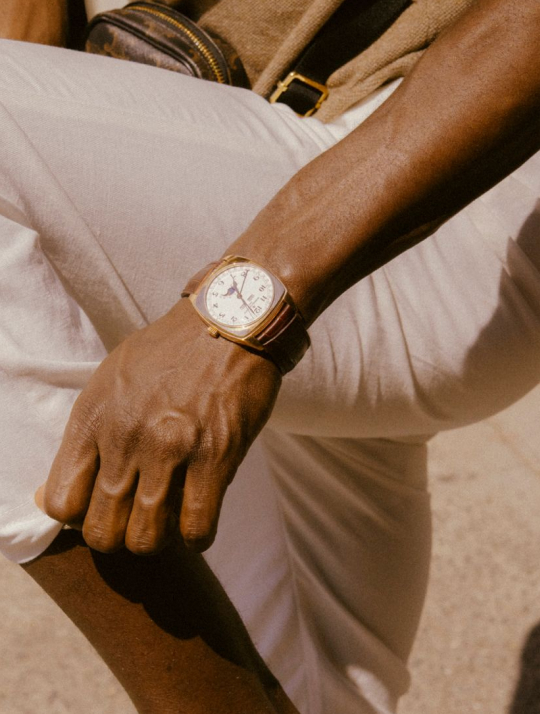
A Vacheron Constantin watch signifies status.
Jean-Marc Vacheron started the house in 1755, making it the oldest continuously running watchmaker. All Vacheron Constantin watches come marked with the distinguished Poinçon de Genève (The Geneva Seal), which is awarded “to timepieces with remarkable finishes and decorative details” of mechanical movements.
“Faire mieux si possible, ce qui est toujours possible. (Do better if possible and that is always possible.)”
Vacheron Constantin motto.
History
When Jean-Marc Vacheron founded his watch company in Geneva, Switzerland, could he have known that it would operate uninterrupted for 266 years? Or that their timepieces have graced the royal courts throughout Europe and the Middle East, the wrists of world leaders, luminaries, the wealthy jet set, and celebrities? Without a doubt, Vacheron Constantine’s 266-year history is full of notable achievements, innovations, awards, and storied moments.
Founded in 1755 by Jean-Marc Vacheron, Vacheron Constantin holds the distinction of being the oldest continuously operating Swiss watch manufacturer in the world. That same year marks the earliest known pocket watch made by Vacheron, a silver timepiece signed “J.M. Vacheron A GENEVE” on its movement. It carried both technical and aesthetic standards, for which the house would eventually become known. In 1770, Vacheron’s company created the world’s first horological complication, and nine years later, he designed the first engine-turned dials. Six years later, Vacheron’s son Abraham would helm the house in 1785, keeping it running despite the challenges of the French Revolution and the occupation of Geneva. He would pass down the craft to his son Jacques Barthélémi Vacheron. Twenty years later, in 1821, Abraham passed the torch to Jacques Barthélémi. Under Jacques’s leadership, the company made several milestones in innovation, like musical watches that could play two different songs. He also oversaw the exportation of the timepieces to France and Italy. The house was ahead of its time, mastering innovative techniques like an horological complication.
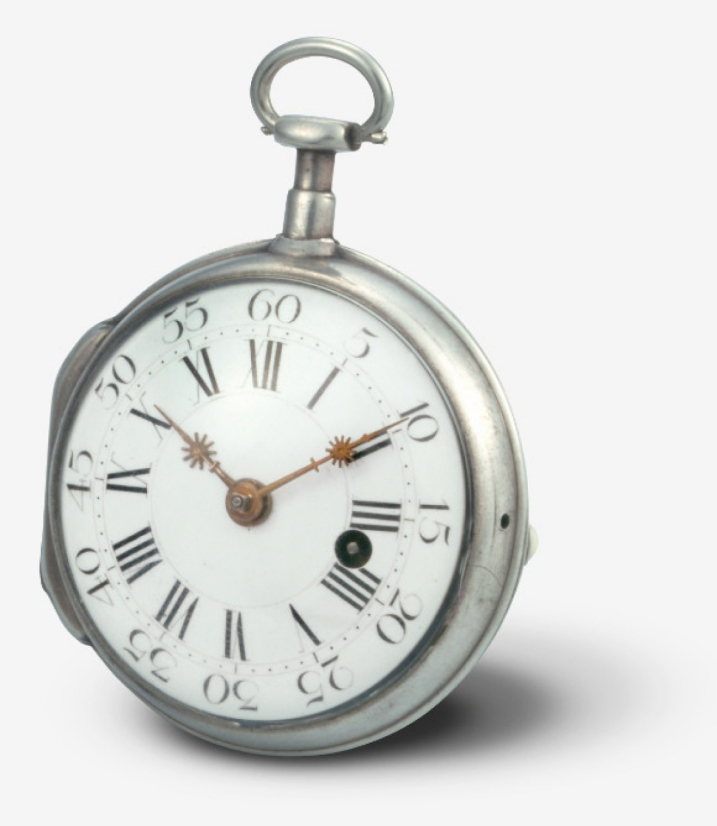
The earliest known timepiece by Jean-Marc Vacheron.
Courtesy Vacheron Constantin.
In 1819 when businessman François Constantin joined Jean-Marc’s grandson, Jacques-Barthélemy Vacheron, the company became known as Vacheron & Constantin. Twenty years later, the house hired an engineer named Georges-Aguste Leschot, who invented a machine called the pantograph. It allowed watchmakers to mechanically duplicate individually handcrafted elements of the movement while also making the pieces interchangeable. The horological innovation won the company an Arts Society of Geneva’s Rive Prize’s gold medal for “the discovery of the most value to the Genevese industry” in 1844. Nearly a decade later, Constantin passed away, and Jacques Barthelemy in 1863. The business remained in their families.
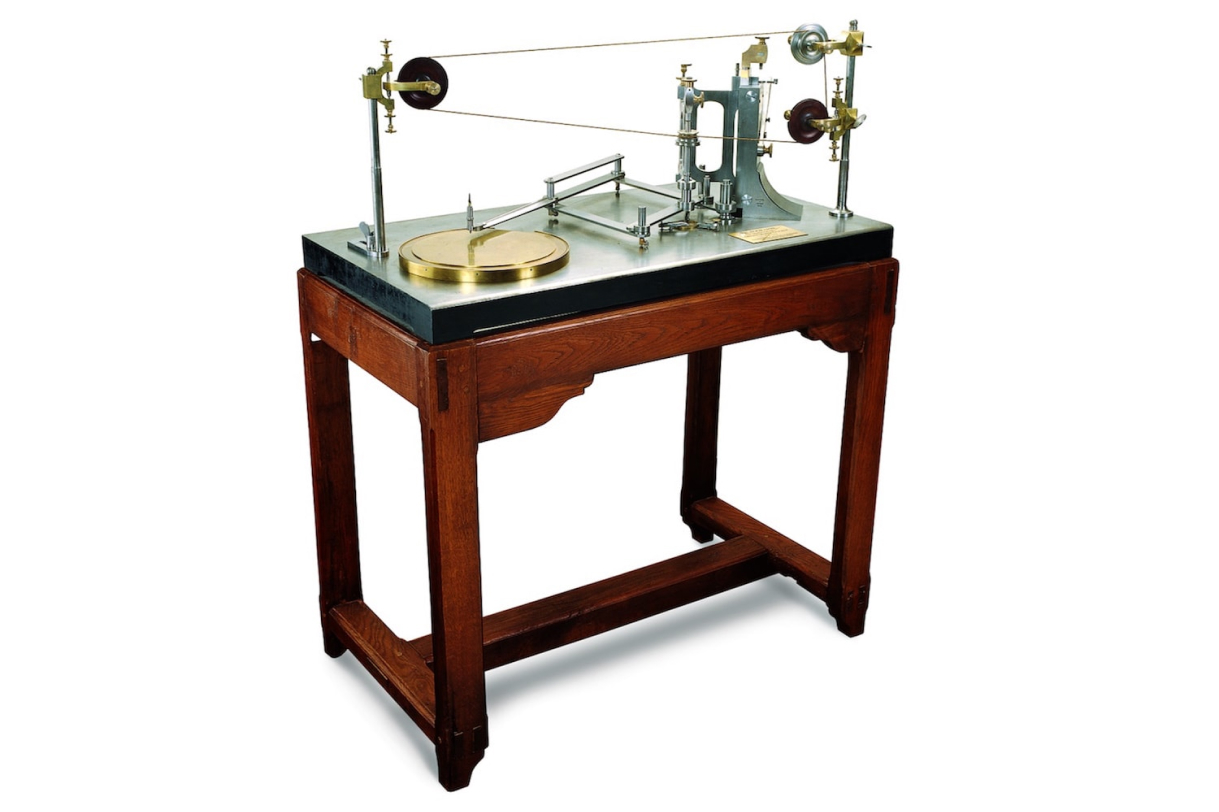
The pantograph.
Courtesy lifestyleasia.com.
The house registered the Maltese cross symbol with the Swiss federal trademarks office in Bern in 1880. The partners selected the logo, which was inspired by the design of a specific movement, to mark the house’s quest for precision. The house’s first nonmagnetic timepiece, a testament to Vacheron et Constantin’s commitment to technological innovation, was produced around 1885. At the end of the decade, the company reached another milestone – the invention of the first ladies wristwatch, made from a bracelet decorated with two winged goddesses and a circle of diamonds around the dial. Before that, personal watches were only pocket watches.
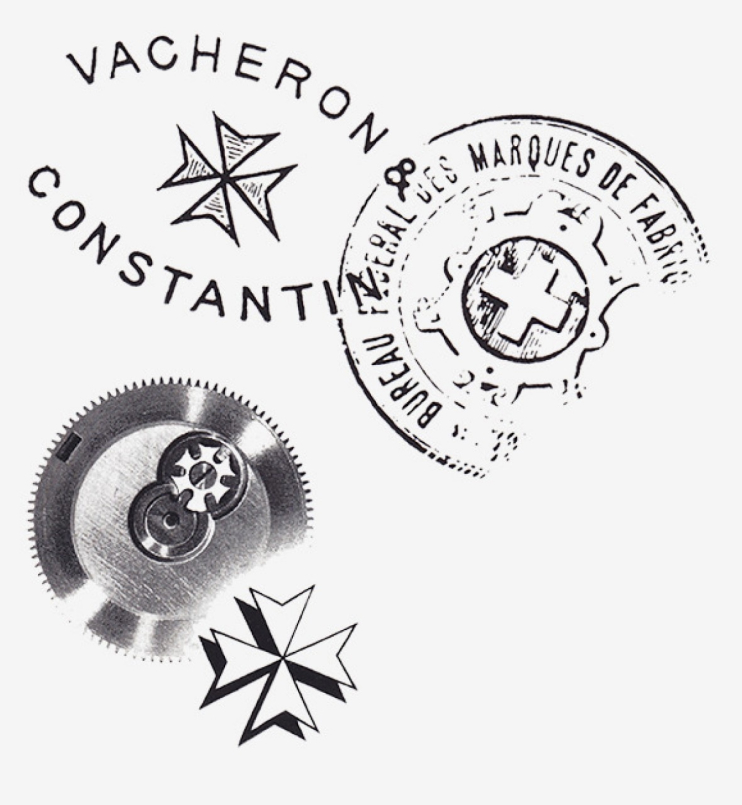
Vacheron Constantin logo.
Courtesy Vacheron Constantin.
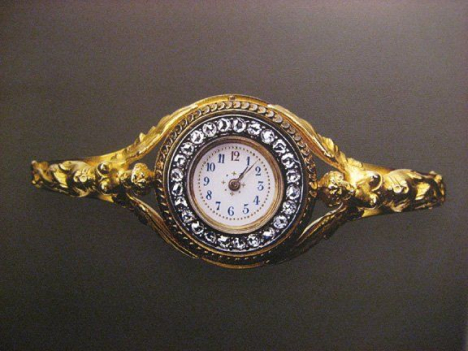
The first Vacheron Constantin women’s wristwatch.
Courtesy WatchProSite
In 1901 Vacheron Constantin became the first watchmaker to receive the prestigious Poincon de Genève, or Hallmark of Geneva. Five years later, on August 1, 1906, it opened its first boutique in Geneva on the ground floor of the Tour de l’Ile, where it had occupied space in the tower’s upper floors. In the early 1940s, the Constantin family lost its majority ownership of the house, and Georges Ketterer, the director of the holding company that took over the house would hold control. The house reached another technological milestone to celebrate its 200th anniversary in 1955, when it released a manually-wound movement that was as thin as a Swiss 20 cent coin, measuring just 1.64mm. It wasn’t until 1970 that the name was officially changed to Vacheron Constantin. The Swiss luxury conglomerate Richemont Group, which also owns labels like Cartier, Chloé, and Van Cleef & Arpels, acquired Vacheron Constantin in 1996. It continues to hold ownership over the house today.
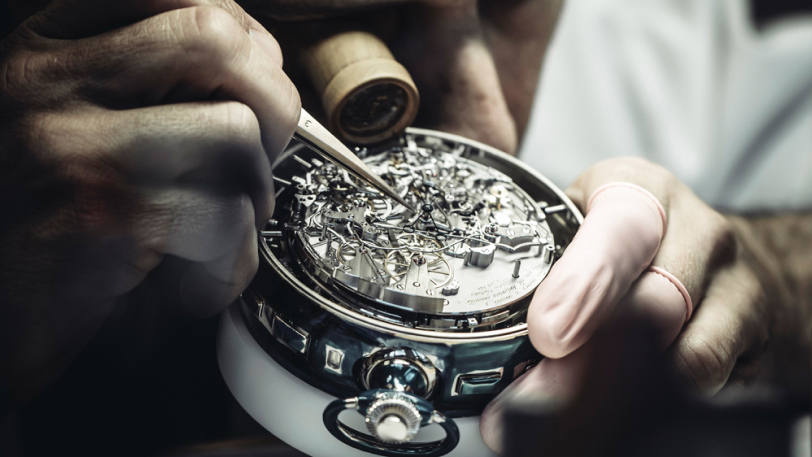
The making of the Reference 57260.
Courtesy Robb Report.
Call it couture for watches. Vacheron Constantin has an in-house bespoke watchmaking service called Les Cabinotiers, where customers can commission Dominique Bernaz and his team of 30 to create their own unique timepiece. Customers can create a watching according to their wildest dreams. Watchmakers can make unique movements and complications, or make a few tweaks to specific existing models for an original Vacheron Constantin watch.
One client came to Vacheron Constantin and requested Les Cabinotiers division to create and build the world’s most complicated watch. In 2015, Les Cabinotiers unveiled Reference 57260, which is the most complicated timepiece in the world. It took them eight years to design and develop this horological wonder. At approximately two pounds in weight, the case is crafted in 18-karat white gold and two inches in diameter (6.25 inches in circumference), making this incredible timepiece about the size of a softball. The pocketwatch derives its name from a combination of the 57 complications and Vacheron Constantin’s 260th anniversary. An anonymous collector in the Americas commissioned it, paying an estimated $8 million. The client also requested that this piece house some particular complications and functions, including a Hebraic perpetual calendar and a unique split-seconds chronograph that allows the timing of multiple events at once. Never before were these technically complex and advanced complications incorporated into a watch. Reference 57260 has nearly twice the previous record of 33 complications for most complications in a watch. To achieve this record, Reference 57260 contains more than 2,800 individual components. By comparision, a traditional time-only watch consists of approximately 130 individual parts. Because of this, Vacheron Constantin filed ten new complication patents during its construction.
Vacheron Constantin’s Core Collections
Historiques
The Historiques, also known as the American 1921 collection is a reimagining of some of the most notable and iconic vintage Vacheron Constantin models. The Historques’s redesigns include improved features while carefully preserving the watches’ core.
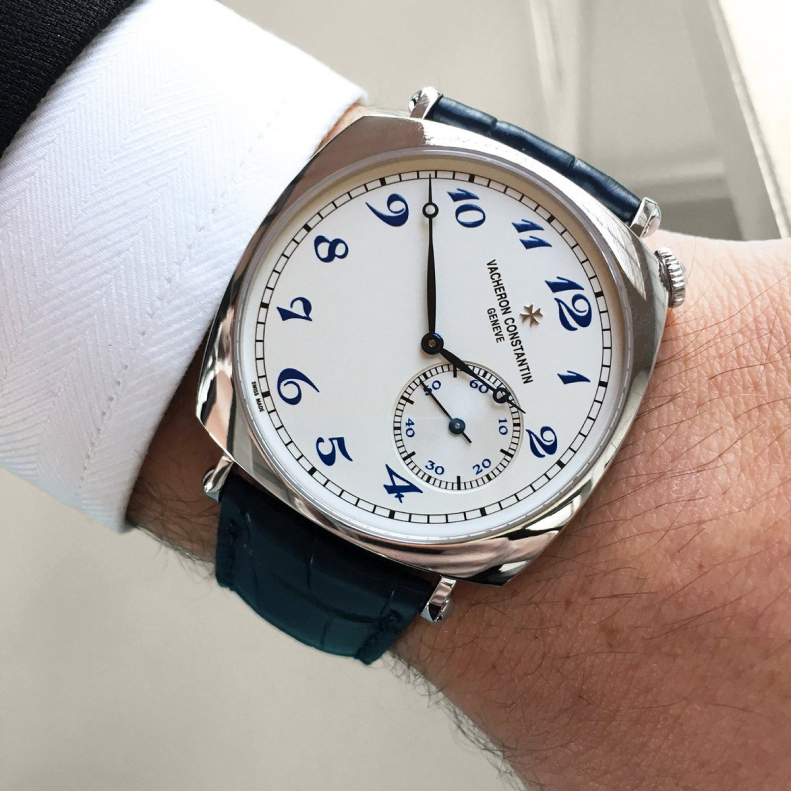
The Historiques American 1921 in platinum.
Courtesy Twitter.
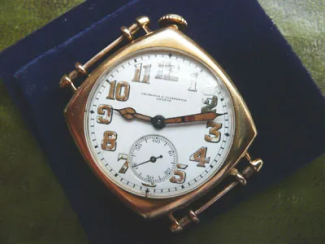
The original American 1921, then known as Ref# 11677.
Courtesy Monochrome.
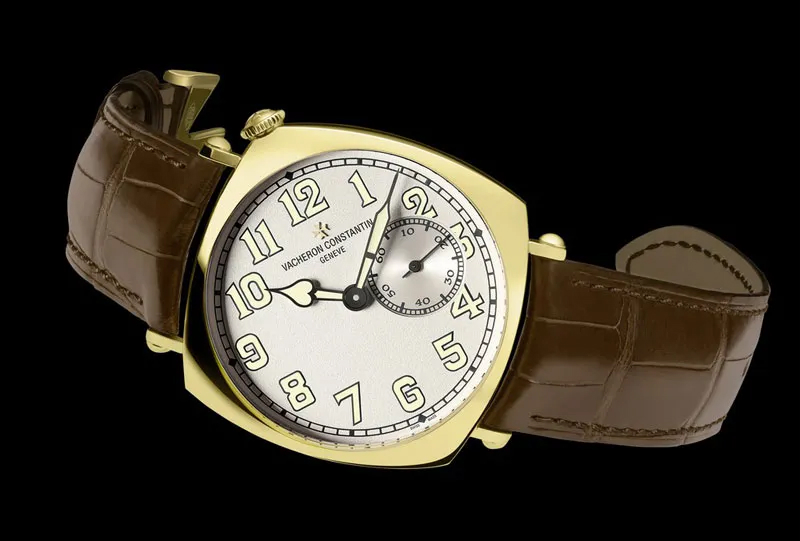
The Madison Avenue boutique-only limited edition Historiques American 1921 Boutique New York.
Courtesy Monochrome.
For the watch’s centennial, Vacheron Constantin created an exact replica of the Historques American 1921 called The Pièce Unique 1921. It’s even made using the same techniques from 100 years ago. To make the piece, the house collected unused old stock of watch parts from the archives. The historical watch that The Pièce Unique 1921 is modeled after was made in 1921 and purchased seven years later by Rev. S. Parks Cadman, a renowned American liberal Protestant minister, who used the then-groundbreaking method of preaching over radio as a way to reach the masses. The new one even includes the old logo that reads “Vacheron & Constantin.” The placement of the 12 at the corner rather than the top puts the Historiques in a league of their own.
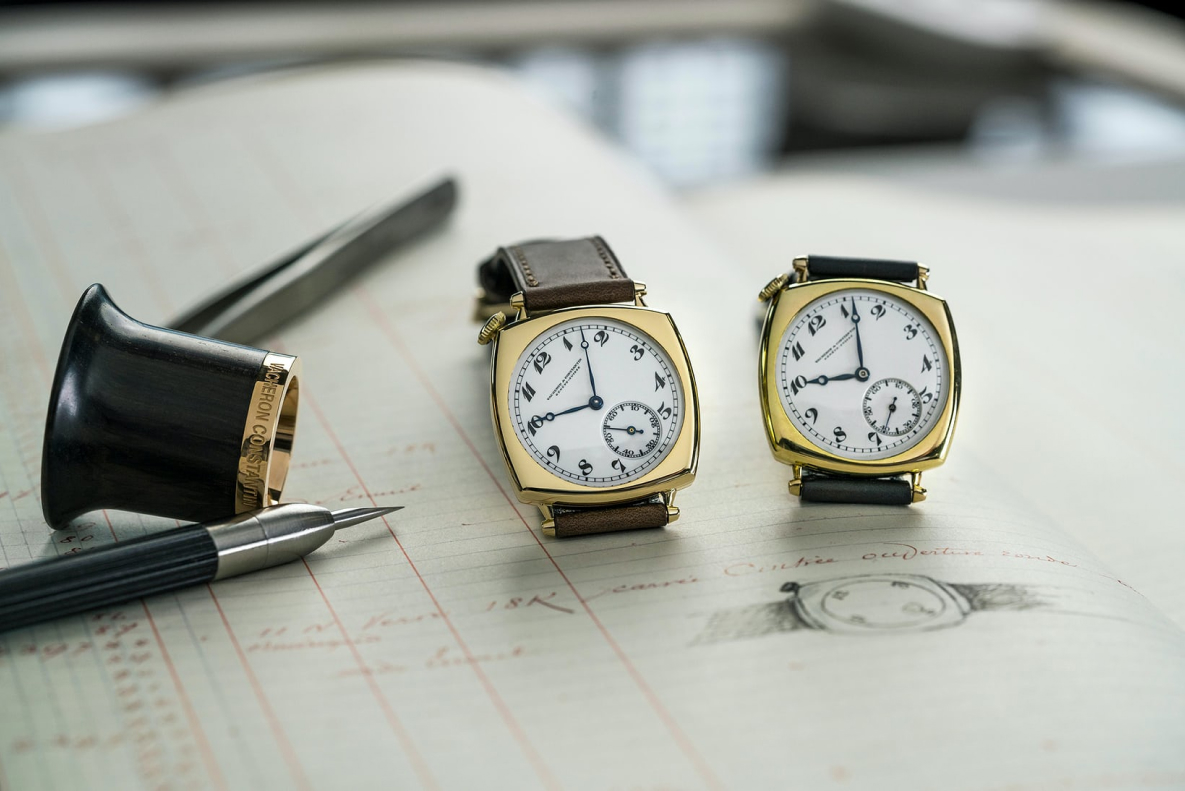
Left, the Pièce Unique 1921; right, the original 1921 model.
Courtesy Hodinkee.
Patrimony
In keeping with the tradition of remaining true to their design roots with an eye on the future, the Patrimony dress watch, originally introduced to great success in the 1950, was revamped with a strong ties to the original’s DNA making for another elegant Vacheron Constantin timepiece.
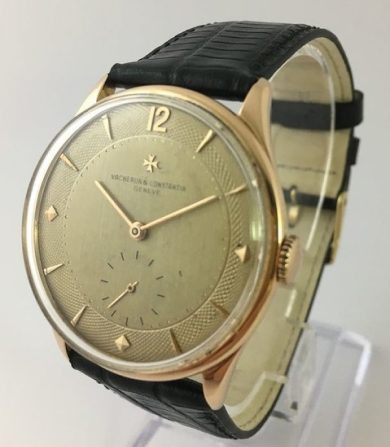
Caption: A 1950s 14-karat gold Patrimony.
Courtesy Lot-Art.
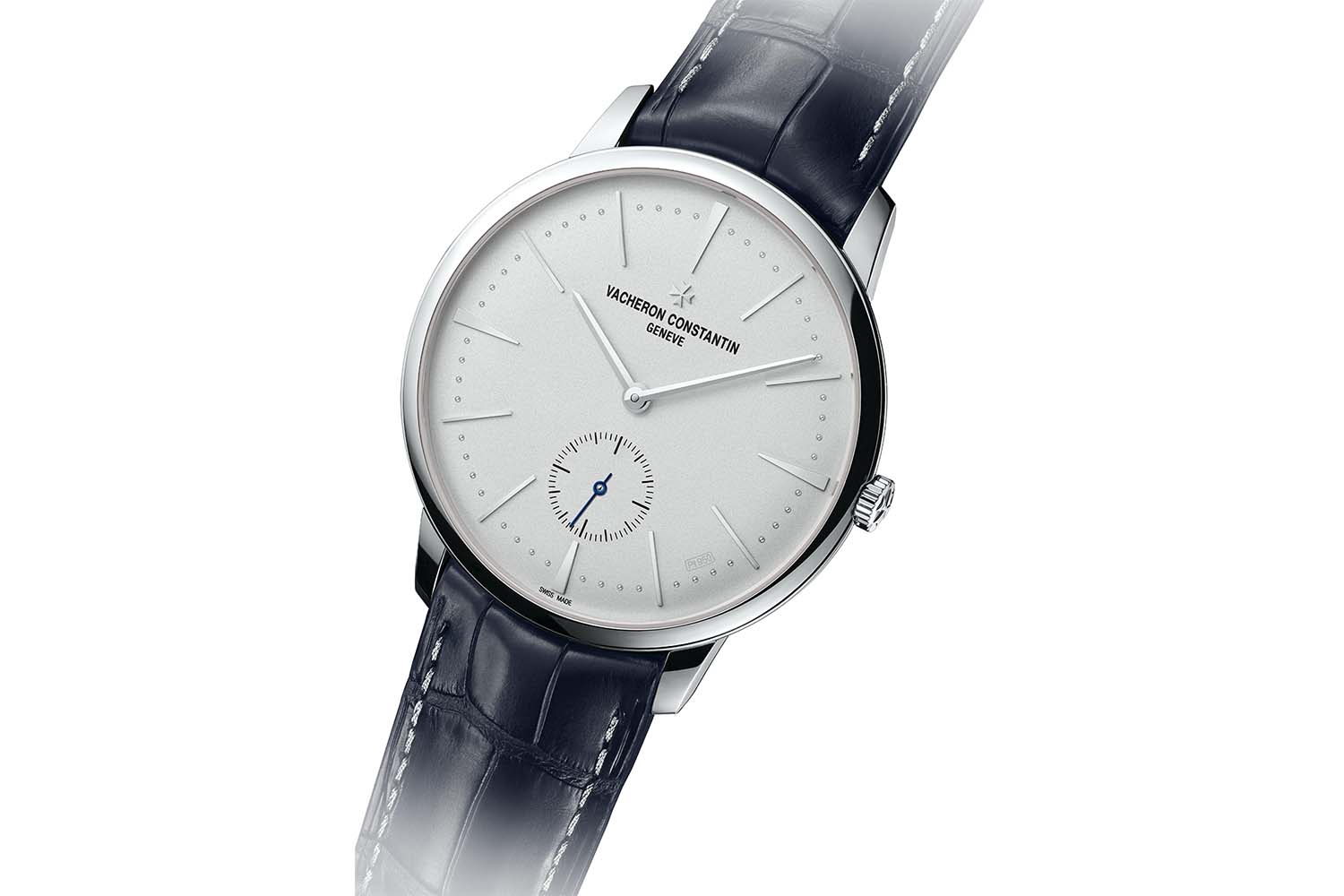
The reimagined Patrimony in platinum.
Courtesy Monochrome.
Overseas
First introduced in 1996, the Overseas is Vacheron Constantin’s durable-yet-sleek sports / travelling watch. It has stood the test of time, remaining one of the company’s most popular watch families today.
Traditionnelle
The Traditionnelle collection was designed to honor Vacheron’s Constantin’s heritage of Genevan haute horlogerie. Appropriately, Traditionnelle watches offer a wide selection of elaborate complications, from perpetual calendars to minute repeaters to specialty tourbillons.
Harmony
The Harmony collection, introduced in 2015, is a new and exciting addition, and already has become a favorite among Vacheron Constantin fans. The Harmony line offers a variety of complications which are inspired by the brands cushion-shaped case design.
Métiers d’Art
Launched in 2007 the Métiers d’Art collection is a showcase for Vacheron Constantin’s mastery of the decorative arts. Unquestionably every timepiece in the collection is work of fine art and horology.
The Métiers d’Art has grown to house many collections within it, and individual pieces are crafted using two or more traditional decorative techniques, all of them a love letter to the source inspiration and stunningly beautiful in their attention to detail. The first of these collections released was the 2007 Métiers d’Art Les Masques (The Masks) line. The four watches in Les Masques drew inspiration from the tradition of mask making found in early primitive cultures from around the world and rendered them in exquisite form.
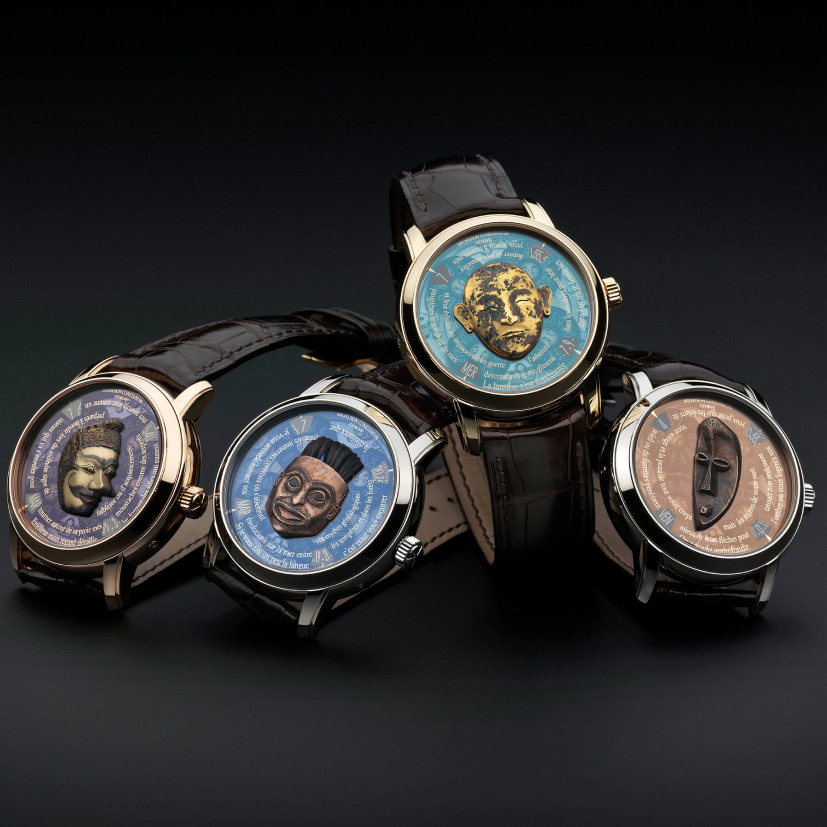
The first set of Métiers d’Art Les Masques (The Masks) from 2007.
Courtesy New York Times.
The Métiers d’Art collection has also showcased the chinese zodiac, paid homage to the great explorers Magellan, Zheng Hé and Marco Polo, the mathematician and scientist, Nicolaus Copernicus, the 12th century illuminations of the Aberdeen Bestiary and the early french exploration of aviation in hot air balloons. Each of these collections celebrates the history and artistry of the world using the traditional decorative arts in a way that only Vacheron Constantin could produce.
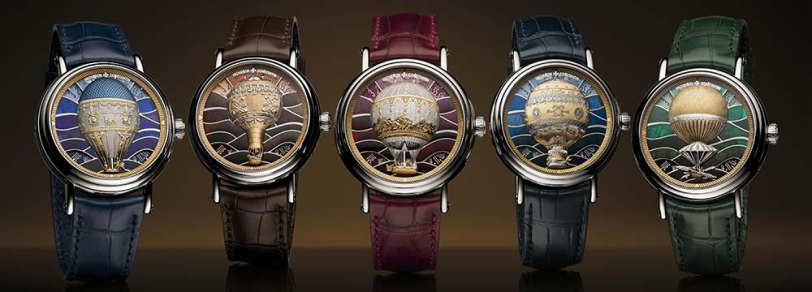
The Métiers d’Art Les Aérostiers collection.
Courtesy WatchesNews.
Status Symbol
Vacheron Constantin became known for its ties to luxury status, creating beautiful collections and one-of-a-kind pieces for royalty, the elite, and the wealthy, even supplying the movement for Fabergé‘s famous Third Imperial Egg in 1887. Several notable names wore timepieces by Vacheron Constantin in the early 20th century, including Henry and William James, Queen Mary of Romania, Harry Truman, and Napoleon Bonaparte. In the 20th century, Hollywood elites like Marlon Brando and Elizabeth Taylor were fans of the brand. In more recent times, Donald Trump wore a Vacheron Constantin Historiques Ultra-Fine 1968 in pink gold on election night in 2016. Alexander Skarsgard wore Vacheron Constantin’s Overseas while on a media tour for The Legend of Tarzan. Actress Kate Bosworth, model Christie Brinkley, basketball player Carmelo Anthony, and baseball player Alex Rodriguez have also been spotted in Vacheron Constantin timepieces.
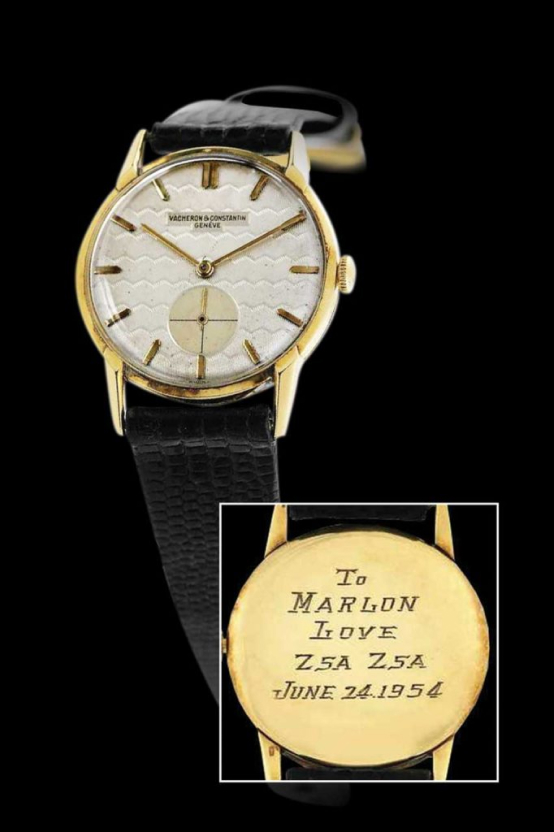
Actress Zsa Zsa Gabor gifted Marlon Brando this watch to celebrate
his win for On the Waterfront in 1954.
Credit: Courtesy Revolution.

Kate Bosworth wearing a Vacheron Constantin watch at a 2008 event.
Credit: Courtesy Popsugar
Investment Value
According to Clair, Rebag’s comprehensive luxury appraisal index, Vacheron Constantin timepieces have a high investment value, and will retain their value in the next six months.
Vacheron Constantin Sizing Breakdown
Harmony Complete Calendar Automatic Watch Rose Gold and Alligator 40
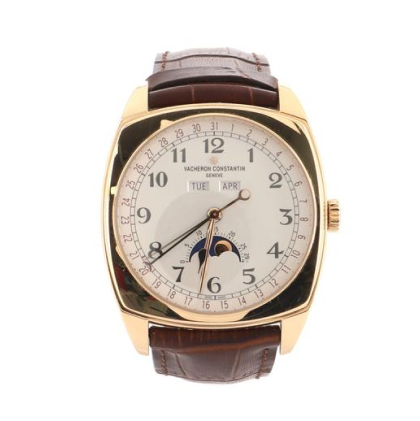
Case Size/Width: 40mm
Watch Height: 11mm
Band Width: 23mm
Wrist circumference: 7.0″
The Vacheron Constantin Métiers d’Art Fabuleux Ornements watch in French Lace
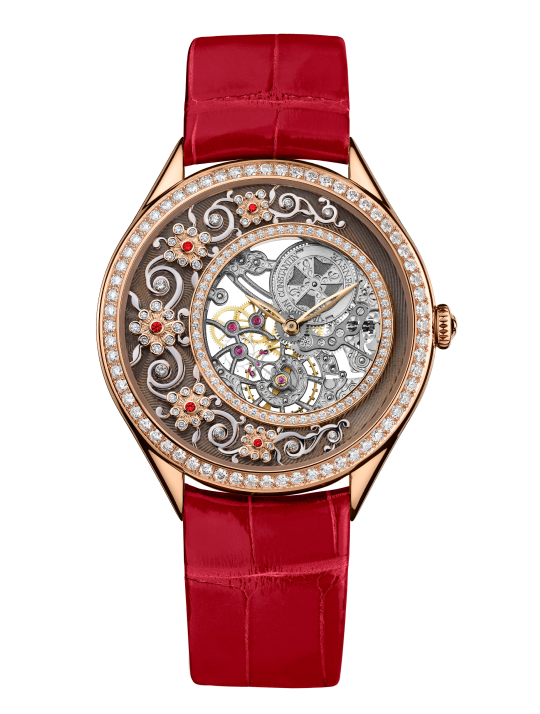
Case Size/Width: 37mm
Watch Height: 8mm
Fiftysix Automatic 40mm Stainless Steel and Alligator Watch
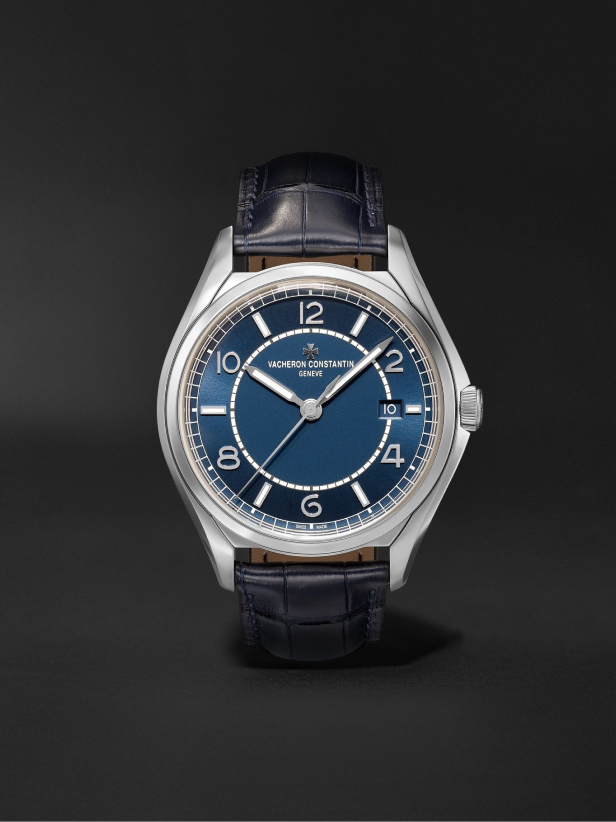
Case Size/Width: 40mm
Watch Height: 9.6mm
Traditionelle Split-Seconds Chronograph Ultra-Thin Collection Excellence Platine

Case Size/Width: 42.5mm
Watch Height: 10.72mm
Patrimony
Self-Winding
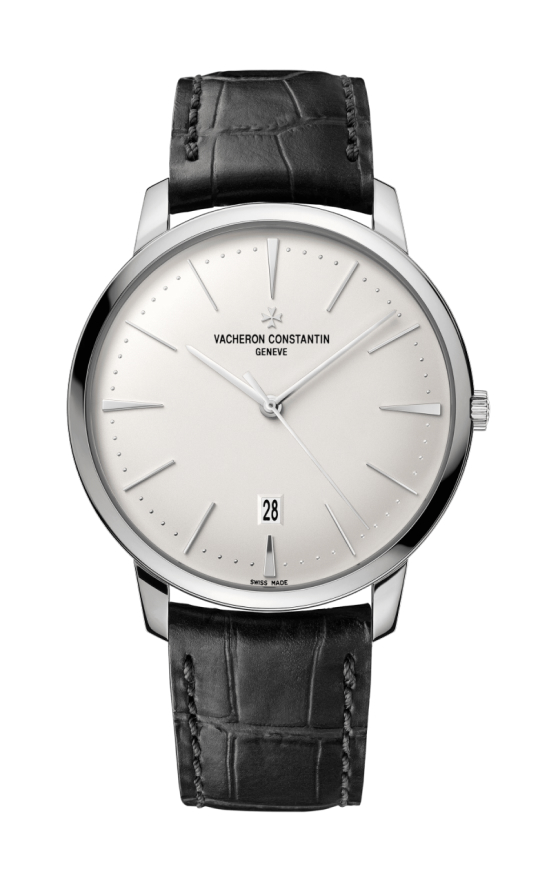
Case Size/Width: 40mm
Watch Height: 8.55mm
Overseas
Self-Winding
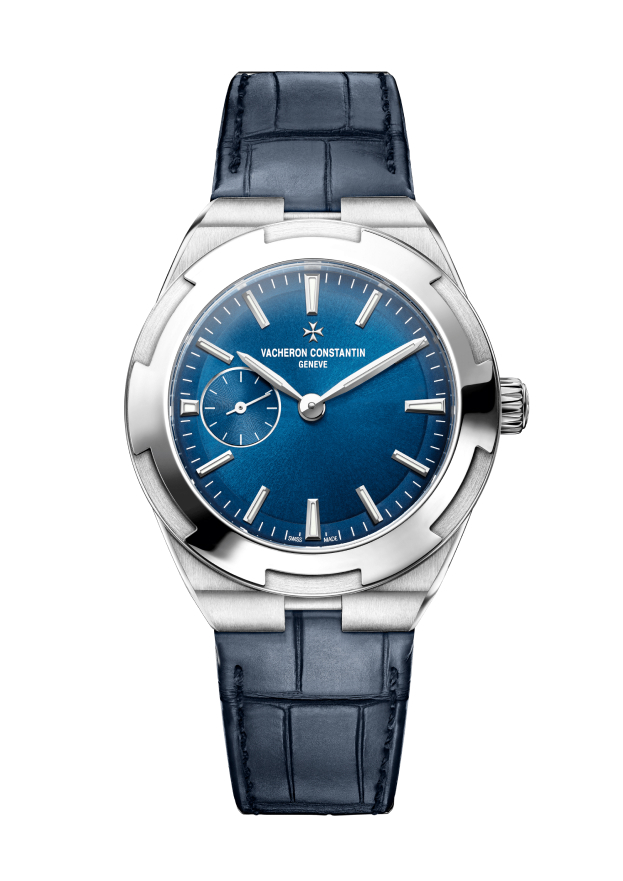
Case Size/Width: 37mmWatch Height: 11.13mm
Les Historiques Chronograph
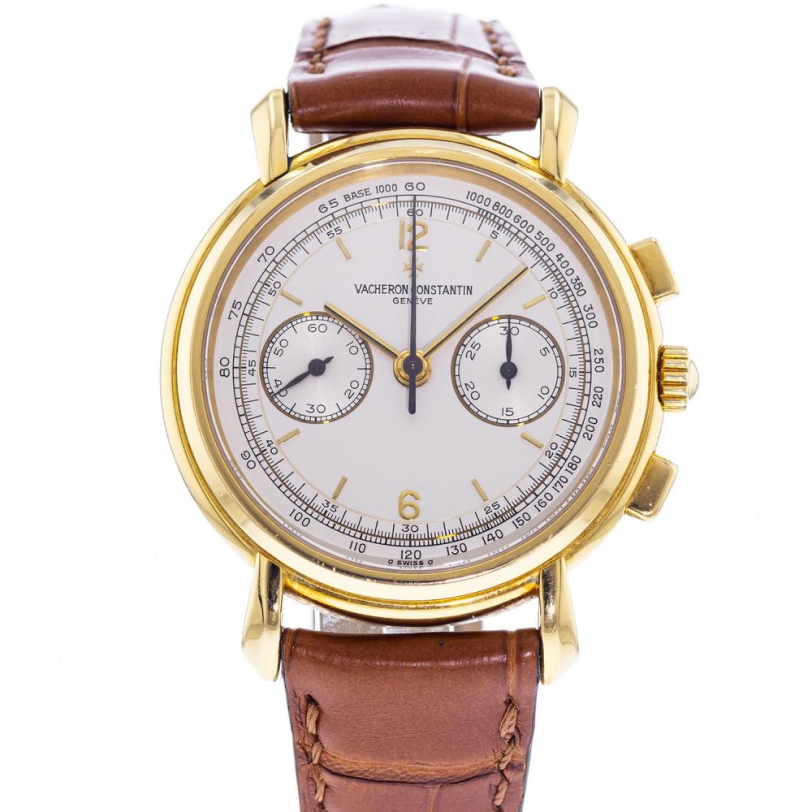
Case Size/Width: 40mm
Watch Height: 11mm
Band Width: 23mm
Wrist circumference: 7.0″
Métiers d’Art Villes Lumières Tokyo

Case Size/Width: 40mm
Watch Height: 11mm
Band Width: 23mm
Wrist circumference: 7.0″
Historiques
American 1921
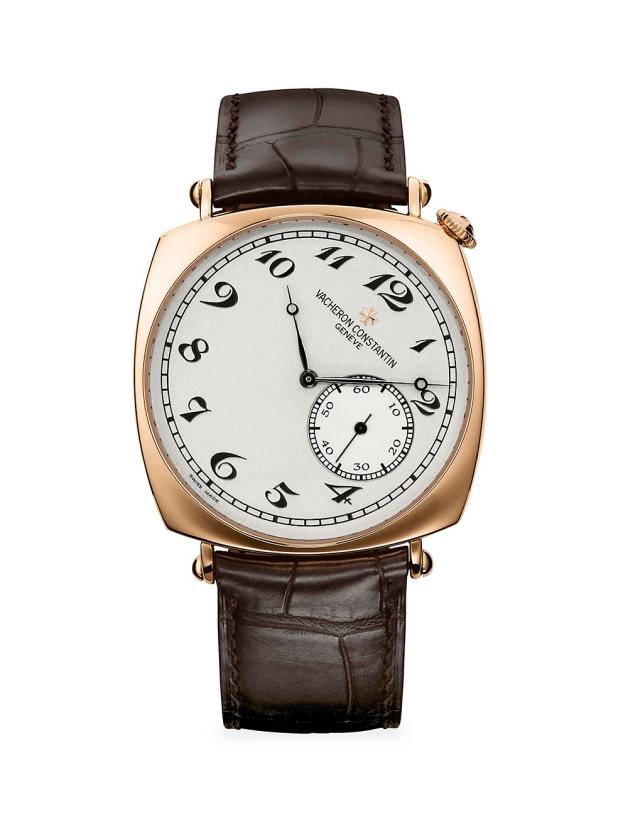
Case Size/Width: 40mm
Watch Height: 11mm
Band Width: 23mm
Wrist circumference: 7.0″
Materials And Hardware
The materials and hardware used in Vacheron Constantin timepieces are just as diverse and varied as the house’s watch offerings, being consistent in that they’re of the highest quality. The classic Patrimony, for instance, comes in 18K white gold and a Mississippi alligator skin strap, while the Overseas is made of stainless steel. The Historiques American 1921 comes in 18K rose gold with an alligator strap. Gold, platinum, and stainless steel are some of the metals used in Vacheron Constantin watches. A wide range of stones is used in the watches, like in the Kallista and Kalla, which are both covered in emerald-cut diamonds. Watches from the Métiers d’Art collections are made with diamonds, sapphires, jade, and a wide array of other gems.
Special Editions/Color Range
Kallista
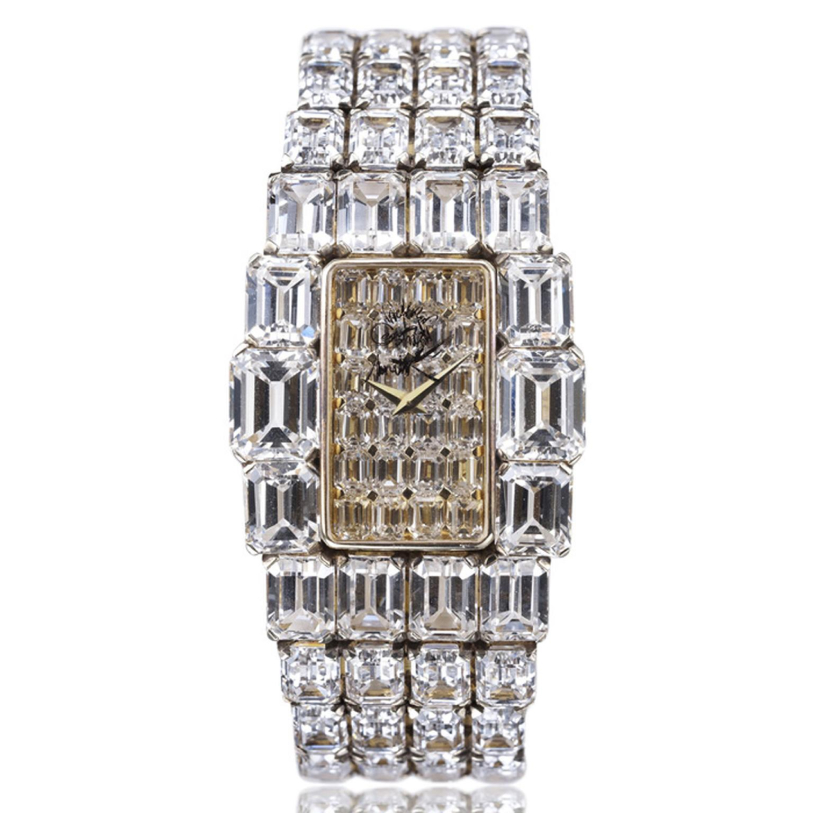
Courtesy The Jewellery Editor.
Named for the word that means “the most beautiful” in Greek, the Kallista was produced in 1979, covered with 118 emerald-cut diamonds, and priced at about $7 million then. It was the most expensive at the time, and eventually inspired the diamond-covered, high-jewelry-influenced Kalla series.
Kalla Sovereign Fully Loaded Platinum Pavé Diamond Dial
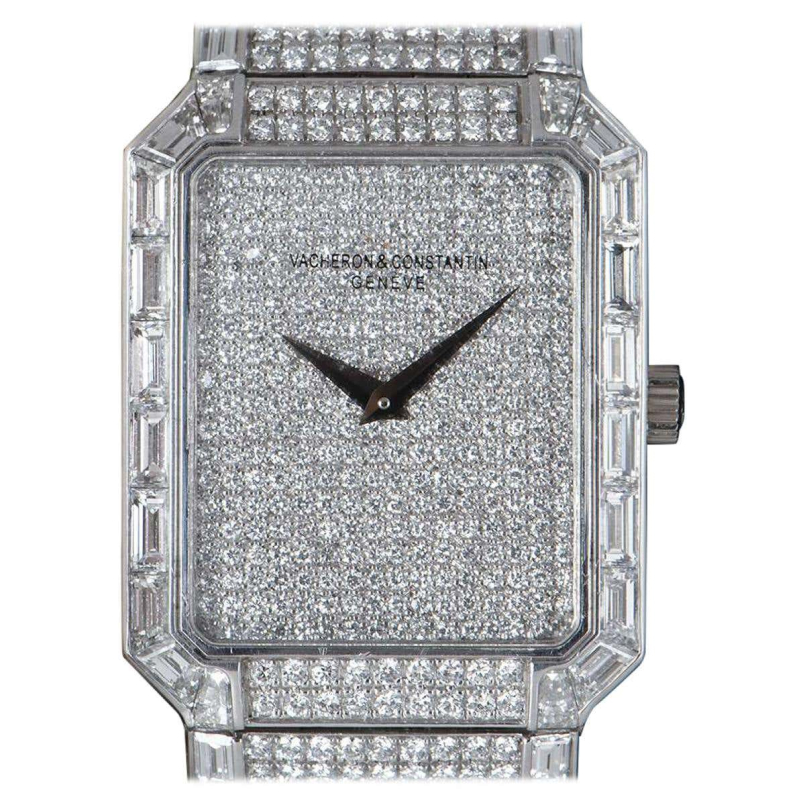
Courtesy 1stDibs.
The Kalla men’s wristwatch is made from platinum and, not counting the dial, is embellished with an impressive 808 diamonds, totaling approximately 19.7 carats.
Patrimony Perpetual Calendar Ultra-Thin Midnight Blue Dial
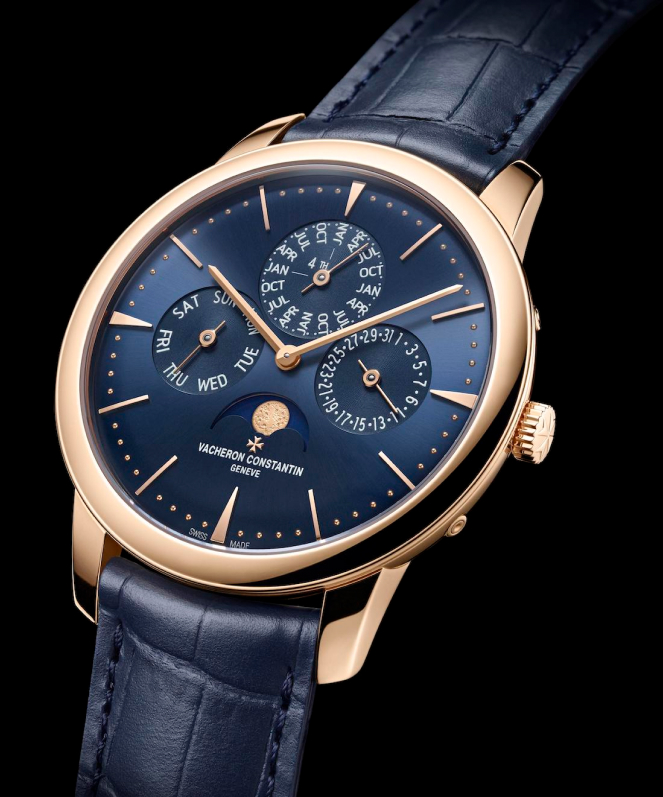
Courtesy Watch Collecting Lifestyle.
The Patrimony collection recalls the minimalist approach of Vacheron Constantin styles from the 1950s. This model indicates hours, minutes, the moon phase, and calendar day.
Métiers d’Art Fabuleux Ornements in French Lace

Courtesy Time Transformed.
This timepiece was made in an extremely limited edition of only 20. It pays homage to the craftsmanship behind French lace and is adorned with garnet-colored sapphires and diamonds on the dial and diamond bezel.
Métiers d’Art Marc Chagall Paris Opera House Watch
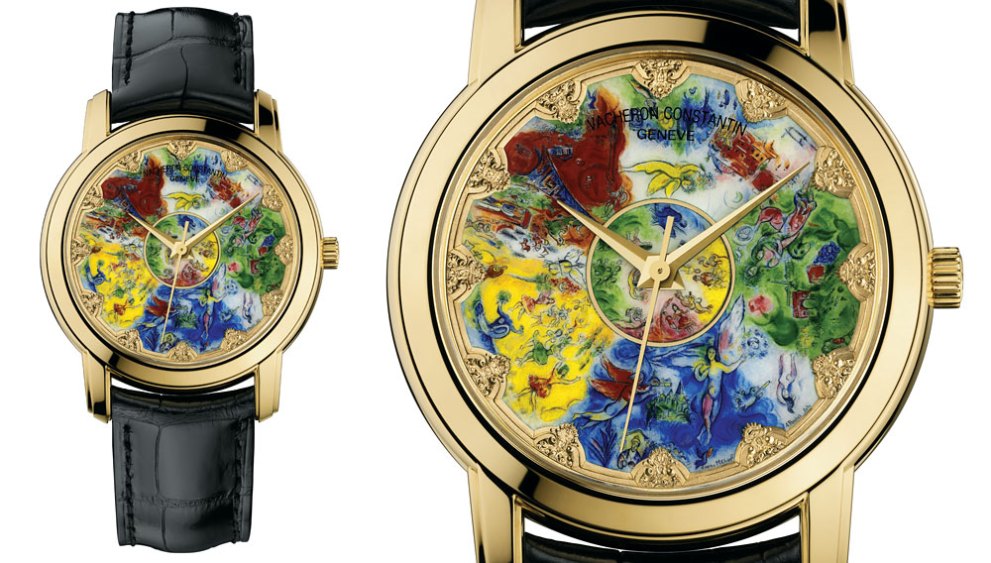
Courtesy Robb Report.
This Métiers d’Art pays tribute to artist Marc Chagall’s 1964/1964 mural on the ceiling of Opéra Garnier in Paris. Vacheron Constantin released this Métiers d’Art Marc Chagall Paris Opera House Watch in 2010 to celebrate the 30th anniversary of the Association pour le Rayonnement de l’Opéra National de Paris (AROP), the Friends of the Paris Opera & Ballet. It’s so exclusive, that it was never for sale.
Vacheron Constantin is known for its ability to marry design and function flawlessly, creating some of the most beautiful and complicated award winning watches in the world. Whether it be a watch from their current catalog production or a one of a kind bespoke model, Vacheron Constantin watches speak of an elegance and refinement that few brands can match.

